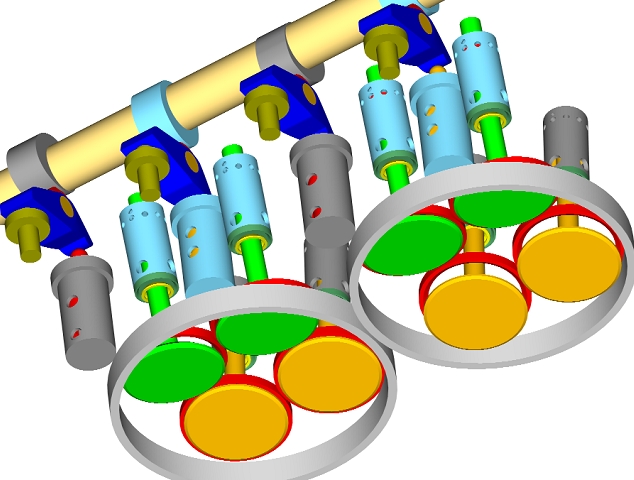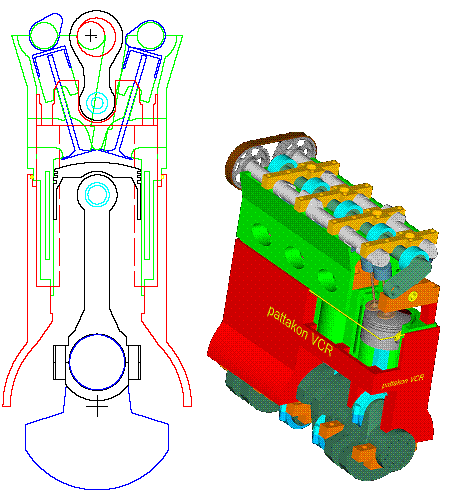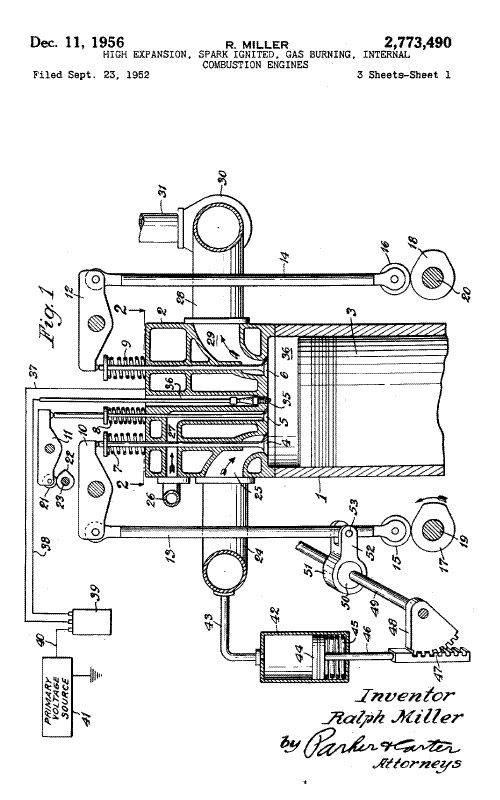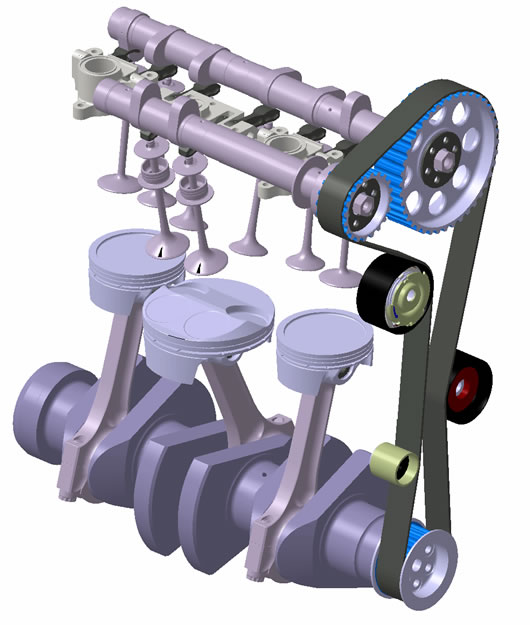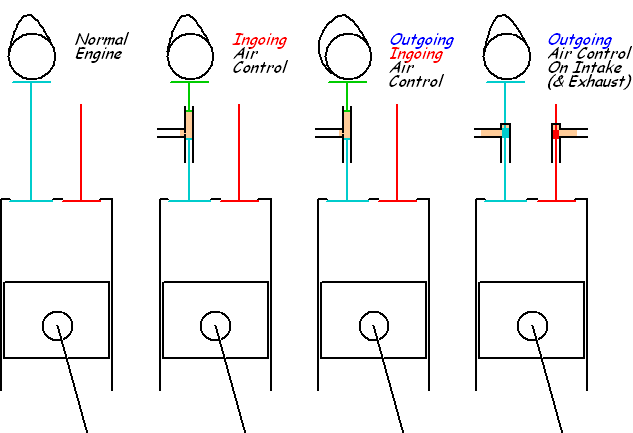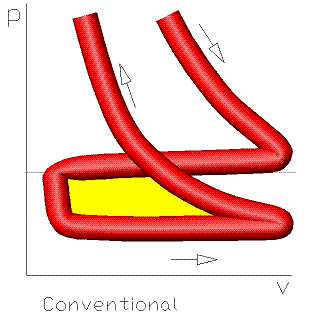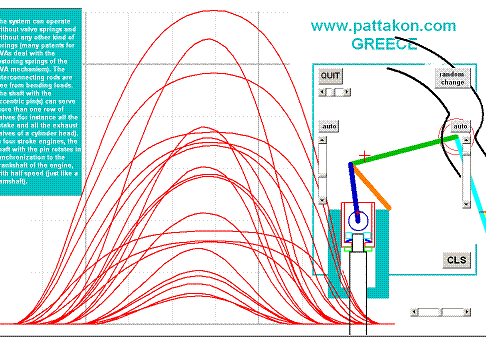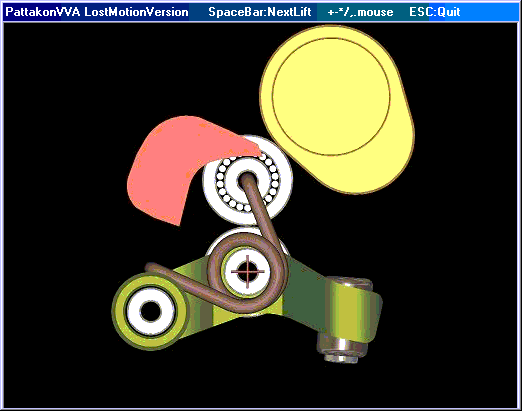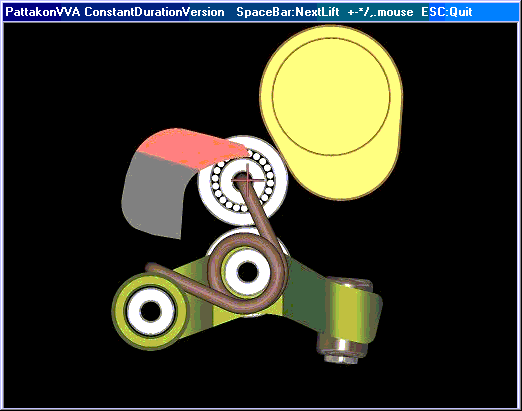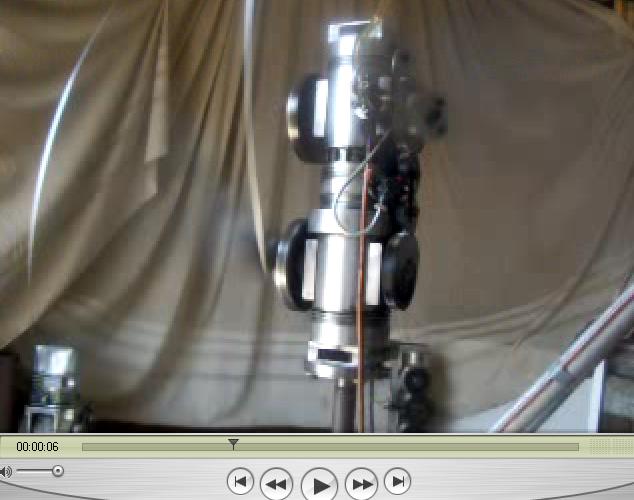Hello Speedman.
You are right.
There is no "best Variable Valve Actuation system".
Each one has its own advantages.
Some combine a lot of them.
Some "show the way" for the things to come.
You write (post 25):
"I know a supplier engine engineer of BMW. He said me: BMW wanted a full variable electro magnetic valve system (5 series), but the system was too expensiv, The valvetronic was cheaper. I don't like valvetronic. The system is too high, has too much parts and is not for high rpm and is too expensiv.
I prefer the valve system Valvematic of Toyota. Is actually not full variable, but is for high rpm is almost indestructible, low building and is not so expensiv,"
Is the Toyota's Valvematic not full variable in the meaning that it cannot go to zero (or almost zero, to get rid of the throttle valve) valve lift?
I think it can.
The valvetronic of BMW, the VVLE of Nissan Infinity and the Valvematic of Toyota are all "lost motion" VVA's, and none of them is really "fully variable".
The following two images are from the
http://www.pattakon....nLostMotion.htm .

The above VVA can do everything the valvetronic does (it is a lost motion VVA, too), being way simpler, lightweight and compact.
The following VVA is not a "lost motion" VVA (it does not "cut" a part of the valve duration; it just lowers - from a maximum to zero - the valve lift, effecting substantially to the "actual overlap" too):

Quote from
http://www.pattakon....KeyAdv.htm#dvva
"Comparing the DVVA
BMW's valvetronic is a lost-motion VVA. It is variable, but not fully variable. For each valve lift, valvetronic has only one available valve duration (this valve duration is not an optimized one for the specific lift, it is just what the mechanism can give) while DVVA has infinite, and for each valve duration valvetronic has one only available valve lift (again not an optimized valve lift for the specific valve duration, just what the mechanism can give) while DVVA has infinite. The valvetronic is based on a relatively "heavy" oscillating member that "opens" under the camming action of the camshaft and "closes" under the restoring action of a vertical-long-big-spring. The valves in valvetronic need their own conventional valve springs to close. The big springs and the heavy parts restrict valvetronic to not high revving applications (rev limiter at 6800 rpm) and this is why valvetronic is missing from BMW's sport cars.
Nissan's VVEL is also a lost-motion VVA, like valvetronic. It is as variable as valvetronic, but not fully variable. It needs valve springs to restore the valves. The VVEL mechanism is demi-desmodromic: there are valve springs to restore the valves but there are no other springs, like the "vertical-long-big-springs" of the valvetronic mechanism. This is why Nissan's top sport coupe 370Z (VQ37VHR-V6-VVEL) can operate at 7400rpm to provide 94.7bhp/lit specific power. The "maximum rpm" of the same sport engine is set to 7500 rpm (only 100rpm higher than the peak power revs!) saying a lot about the limitations of the current VVAs.
Toyota's "valvematic" has similar limitations to BMW's valvetronic.
In comparison pattakon DVVA provides infinite times more valve lift profiles to better optimize the breathing of the engine, and allows as high revs as the underneath mechanism can stand (block, crankshaft, con-rods, pistons). The ideal VVA is the one that optimizes the breathing of the engine at all revs and every load.
The DVVA, depending on the angular position of its control shafts, can "play" either as Lost Motion VVA (valvetronic for instance), or as Constant Duration VVA (pattakon VVA rod version, for instance), or as a single mode Ducati Desmo valve train, or as anything in-between them.
The one moment DVVA can operate accurately at 300 rpm, 0.15mm valve lift and 50 degrees valve duration, while the next moment DVVA can rev at 15,000 rpm, 14mm valve lift and 360 deg valve duration."
At
http://www.pattakon....attakonFVVA.htm it is presented a Fully Variable VVA (the parent of the DVVA ) :
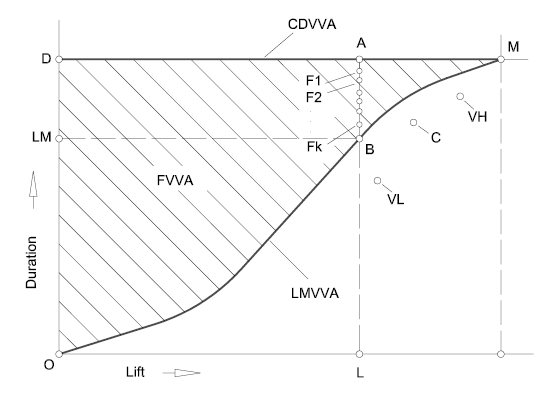
BMW's valvetronic and Toyota's valvematic, and Nissan's VVEL "move" only along a line (a curve) like the O-B-M. If you pick a lift, there is only one possible duration to combine with it (non necessarily a good one; it is just what the linkage gives). If you pick a duration, there is only one valve lift to combine with it (non necessarily a good one; it is just what the mechanism gives).
The FVVA and the DVVA of pattakon are both "fully variable" VVA's.
They can "move" anywhere in the hatched area.
For each valve lift there is an infinity of available valve durations to pick from, and for each valve duration, there is an infinity of available valve lifts to pick from.
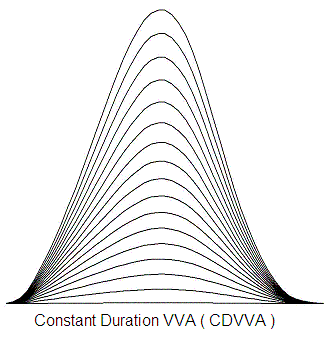
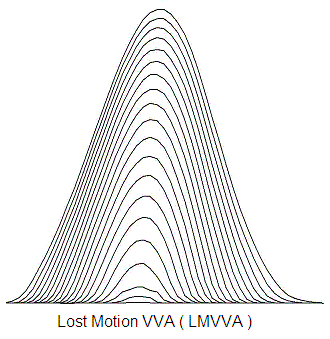

Thanks
Manolis Pattakos
Edited by manolis, 25 April 2014 - 04:54.




